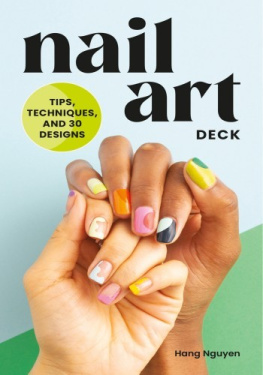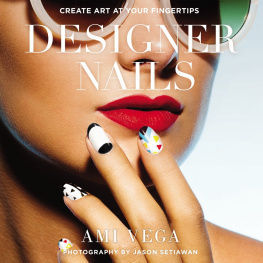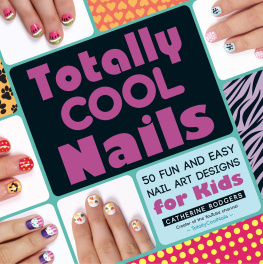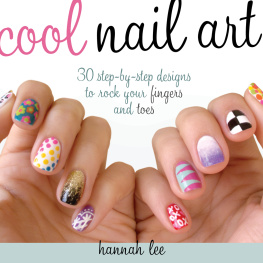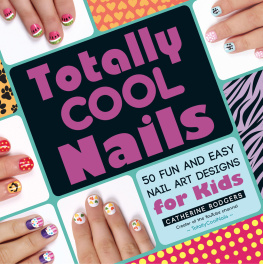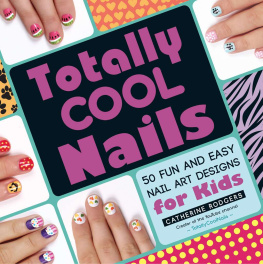

Text copyright 2014 Allison Rose Spiekermann. Photographs copyright 2014 Allison Rose Spiekermann except as noted below. Design and concept 2014 Ulysses Press and its licensors. All rights reserved. No part of this publication may be reproduced, stored in a retrieval system, or transmitted in any form or by any means without the prior written permission of the publisher, nor be otherwise circulated in any form of binding or cover other than that in which it is published and without a similar condition being imposed on the subsequent purchaser.
Published in the U.S. by
Ulysses Press
P.O. Box 3440
Berkeley, CA 94703
www.ulyssespress.com
ISBN: 978-1-61243-331-8
Library of Congress Control Number 2013957315
10 9 8 7 6 5 4 3 2 1
Acquisitions Editor: Kelly Reed
Managing Editor: Claire Chun
Editor: Kate St. Clair
Proofreader: Barbara Schultz
Cover design: Michelle Thompson
Interior design and layout: what!design @ whatweb.com
Cover photographs: front Meera Lee Patel; back Allison Rose Spiekermann
Distributed by Publishers Group West
IMPORTANT NOTE TO READERS: This book is independently authored and published and no sponsorship or endorsement of this book by, and no affiliation with, any trademarked brands or other products mentioned or pictured within is claimed or suggested. All trademarks that appear in directions, photographs, and elsewhere in this book belong to their respective owners and are used here for informational purposes only. The author and publishers encourage readers to patronize the quality brands and products mentioned and pictured in this book.
To Max, for everything
Table of Contents
Wearing nail polish is a fast, fun, and easy way to express your creativity through color and design. But have you ever been inspired to wear a color that just didnt exist? Or wanted to create a polish inspired by a picture youve seen or to match an outfit for a special occasion?
This book is designed to teach anyone to be able to mix unique nail polish colors quickly, easily, and consistently and often using nothing more than what is available at your local drug store. A detailed section on equipment and ingredients will explain what each item can be used for and its benefits to you as you begin your mixing adventure.
Interested in glittery polishes? Learn about the different colors, sizes, shapes, and finishes of glitter and which are best suited for use in polish. Have you tried mixing polish but ended up with separated or lumpy polish? Ive also included techniques that will help you improve existing polishes using a combination of mixing and application techniques.
By following the more than 30 recipes provided here, you will become familiar with the concepts of mixing colors even adding special-effects pigments to make your creations really stand out. Along the way there are photos and instructions to guide you and, ultimately, prepare you to begin mixing your own unique color combinations!
Finally, there are chapters that cover nail polish application and nail art techniques so you can best showcase your handmade polishes.
Before you begin making your own nail polish, its helpful to understand what the main ingredients are and what they do. All nail polish begins with basically three types of ingredients: film-forming agents, plasticizers, and solvents. Different manufacturers will use various ratios of these ingredients (a closely guarded secret!) in an effort to optimize wear, application, and appearance.
The main ingredients, the ones usually listed first, are solvents. These are what help keep the polish a workable consistency that can be applied to the nail neatly. A combination of quicker-and slower-evaporating solvents are used so that immediately after application, the quicker-evaporating solvents help set the polish, but the slower-evaporating solvents allow the polish to level, which eliminates brushstrokes and creates a smooth finish. Ethyl acetate and butyl acetate are the most popular solvents, having replaced toluene in todays 3-Free formulations. Somewhat recently (beginning in the early 2000s) there was a move by nail polish companies to eliminate toluene, formaldehyde, and dibutyl phthalate from their formulations due to actions taken by the European Union to limit or ban these ingredients in cosmetics. Today most nail polishes available are advertised as three-free or 3-free which refers to the fact that they dont contain these three ingredients.
Film-forming agents are just what they sound like; they cause the polish to form a film on your nails. The film-forming agent typically used in nail polish is nitrocellulose and less often, cellulose acetate butyrate. Nitrocellulose is a highly combustible substance (its also used in making dynamite!) that holds the nail polish ingredients together on the nail. On its own, nitrocellulose is hard and brittle, which is why its necessary to add plasticizers.
The plasticizers keep the film on your nails flexible, which helps the polish adhere and prevents chipping. Some examples of plasticizers are acetyl tributyl citrate, camphor, and formaldehyde resin.
Some common nail polish ingredients and their purpose:


Chemicals considered part of the Big 3 and not contained in products that are advertised as 3-free.
Other Ingredients
Beyond the basic building blocks of polish, there are also substances added that give it color, add special effects, provide benefits to the nails themselves, or help with making the formula easy to apply.
Polyethylene Terephthalate (PET) is a fancy name for glitter, specifically glitter made from polyester, which is solvent-resistant to avoid color loss when added to nail polish.
Mica is used to give polish a pearly or frosty effect.
Silicones (such as dimethicone) are sometimes added to enhance the flow of the polish out of the bottle and onto the nail.
Suspension Agents such as stearalkonium hectorite or silica are what enable the color particles or glitter pieces to remain uniformly suspended in the polish. A lack of these ingredients is why adding glitter or pigment to plain clear polish results in everything sinking to the bottom of the bottle.
Titanium Dioxide is a white powder used to create pastel colors and to help with opacity.
Aluminum in powdered form is used to create chrome or metallic shades and can even be treated to create an additive that produces a holographic or color-changing effect.
Formaldehyde (a misnamed methylene glycol) is added to treatments to help harden the nails.
Oils of many different varieties can be added in small amounts to help moisturize the nails.
Mass-produced nail polish uses different types of powdered pigments for color. These are often listed in the ingredients as FD&C colors or by their CI (Color Index) name. Mixing these powdered pigments into polish requires some pretty serious equipment and working with highly flammable ingredients in order to get a smooth and consistent color in the finished product. For personal use, I suggest working with existing polishes as they are easily available, relatively inexpensive, safe to use, and only contain ingredients allowed for use in nail polish.
Next page

